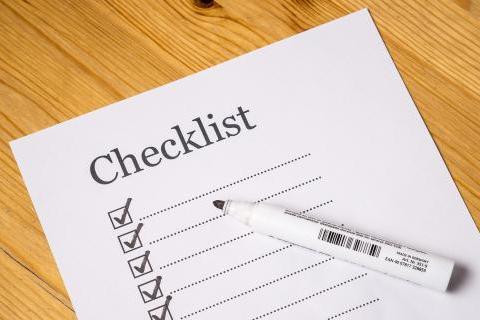Designing a Clean Workshop
by Marian Way in Training

How can we create a workshop that’s ‘clean’ (i.e. attempts to not give people our models, theories, ideas, suggestions, advice and metaphors but instead creates experiences that enable them to learn from themselves and others) AND which has a distinct topic?
This is the challenge Penny Tompkins and I set ourselves when we first conceived our “Discover Your Assertive Self” workshop - and it took a LOT of thinking about. We were so tempted to add in a few pearls of wisdom, and to talk about our favourite models! We had to be strong for each other when one of us made a ‘let’s tell them’ kind of suggestion. We had to notice what assumptions were going into activities we were designing. And we had to acknowledge that it was impossible to make no assumptions at all. Even the name of the workshop has an assumption or two: that everyone has an ‘assertive self’ for example, and that it’s possible to ‘discover’ it.
A common way of explaining ‘assertiveness’ is to compare it to passivity and aggression. Assertiveness is generally thought to be somewhere between the two, and is often described as the middle way, or a balanced approach. Could we assume that this very general model would be true for most of our participants? And how useful would it be, if we did?
We imagined laying down a line with ‘extremely assertive behaviour’ at one end and ‘extremely passive behaviour’ at the other. We imagined asking participants to think of a time when they would have liked to be more assertive and to stand where that would be on the line. Then we imagined asking where they would rather be standing.
But we soon realised that if we were to run an activity like this, we would be implying that assertiveness could be measured on a line. We felt it was getting less clean, so we gave up on this idea.
Another common metaphor about assertiveness relates to personal boundaries.
On MentalHelp.net, Mark Dombeck and Jolyn Wells-Moran make the following distinctions:
- Aggression is about domination and invasion; it is fundamentally disrespectful of a relationship partner’s personal boundaries.
- Passivity is about submission and being invaded; it is fundamentally disrespectful of one’s own personal boundaries.
- In contrast to these two fundamentally disrespectful positions, assertiveness is about finding a middle way between aggression and passivity that best respects the personal boundaries of all relationship partners.
Lots of metaphors are introduced here, and words like domination and submission, invasion and boundaries suggest an underlying ‘war’ metaphor, where people are like lands with distinct boundaries that can be invaded. Indeed, they go on to say that “assertive people defend themselves when someone else attempts to dominate them, using any necessary method (including force) to repel the invasion attempt.” Did we want to suggest a ‘war’ metaphor in our workshop? No.
Of course, if a participant were to discover that they thought about assertiveness in ‘warlike’ terms, that would not be a problem.
Our aim in designing a clean workshop was to respect the metaphors that people already had, to help them work out how they wanted to behave in difficult situations and to provide them with an environment where they could learn how to do that.
So we took another route: modelling each other. We found our own metaphors for when we were being assertive and for when we were not being assertive. We had different metaphors of course, but we realised that we both experienced some uncomfortable ‘bodily symptoms’ that let us know when something needed attending to. We recognised ‘uncomfortable’ body symptoms or other kinds of signals were present in all of the clients who came to us with assertiveness issues – and what useful information these symptoms and signals revealed. So we decided it was safe to assume that our participants might be experiencing something similar.
Reflecting on our own models, we recognised that there was often a choice to be made about how to react in difficult situations, so this became another of our ‘safe assumptions’.
We went on to list a number of safe assumptions, including that:
- participants on the workshop would want to change their behaviour
- they would be able to notice where in their perceptual space they were placing the people who were involved in their assertiveness situations
- there would be situations when they were just as assertive as they wanted to be
- they would learn from each other and the group
So the question then became: How do we minimise those assumptions and how do we maximise the opportunity for people to discover what THEY want / need from their two days with us and with each other?
After designing several activities which utilised these and other safe assumptions we discovered one assumption had us stumped. It seemed safe to assume that most people would benefit from practising how to be assertive within the workshop itself and naturally thought of role plays. But any role plays we could create in advance were unlikely to fit with participants’ contexts, so compared with all the good clean work we’d be doing, that would feel contrived and unreal.
What we wanted was the practising to be an integral part of the workshop. And with two weeks to go, we had a brainwave. We had many more activities than we had time for – so what would happen if participants were to interact with each other to choose which activities were used, and in what order? This would certainly provide a context within which they would need to be assertive. We decided to go with it - and it was a great success. This new idea turned a ‘collection’ of activities into a coherent whole, and resulted in a really innovative and lively workshop. This is another good example of ‘Less is More’: giving ourselves this constraint meant we became more creative.
So what did we learn about designing Clean workshops? First of all, two heads are definitely better than one. The fact that there were two of us kept us clean, allowed us to model each other, generated lots of new information and meant we could build on each others’ ideas. Secondly, our list of ‘safe’ assumptions was invaluable in keeping us on track, helping us to decide which activities warranted further development and which did not. And thirdly, as with all things clean, we needed to trust that by constraining ourselves something new and creative would emerge.
Photo by Tim Mossholder on Unsplash
Related blog posts
Creating an Agenda on the Fly
7th Nov 2017
Creating an Agenda on the Fly (Part 2)
10th Nov 2017
About Marian Way
A highly skilled facilitator and trainer, Marian, who founded Clean Learning in 2001, has developed and delivered training across the world. She is the author of Clean Approaches for Coaches, co-author, with James Lawley, of Insights in Space and co-author, with Caitlin Walker, of So you want to be… #DramaFree.
Marian is an expert Clean facilitator, an adept modeller, a programme writer and an inspirational trainer. She has a natural ability to model existing structures, find the connections between them and design new ways for people to learn. Marian was a leading innovator within the Weight Watchers organisation, which included developing the “points” strategy, a local idea that went on to become a global innovation. She is a director of both Clean Learning and Training Attention CIC, world leaders in clean applications for corporate, educational and community development. She designs our programmes and workbooks, leads workshops and teaches on all our courses. She’s trained people in Great Britain, Russia, Sweden, Germany, Australia, Japan and the USA. Marian is also a recognised Clean Assessor.
- Blog categories
- A - Z of Clean
- Adventures in Clean
- Book Reviews
- Business
- Clean Ambassadors
- Clean Interviewing
- Clean is like ...
- Clean Language
- Clean Language Questions
- Clean Space
- Client Stories
- Coaching
- Creativity
- #DramaFree
- Education
- Health
- ICF
- Life Purpose
- Listening
- Metaphor
- Modelling
- Outcomes
- Practice Group
- Symbolic Modelling
- Systemic Modelling
- Training

